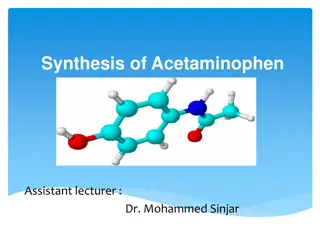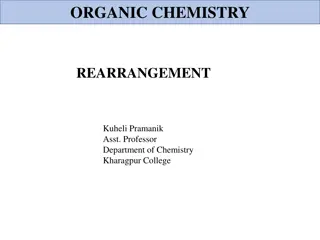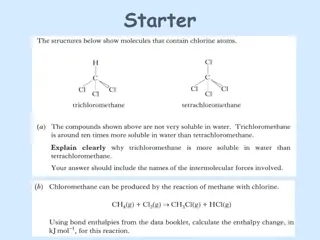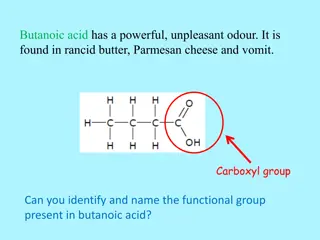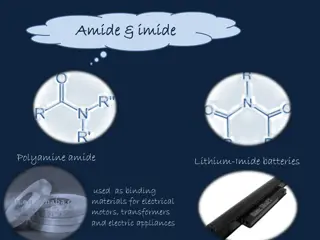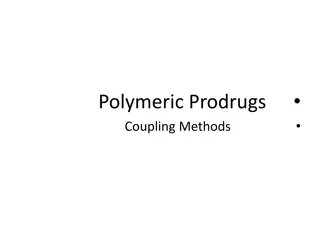Acetaminophen Synthesis Process Explained
Acetaminophen, also known as paracetamol, is a widely used analgesic and fever-reducing medicine. The synthesis of acetaminophen involves treating an amine with an acid anhydride to form an amide. This process includes mixing reactants, isolating crude acetaminophen, and purifying the final product.
0 views • 17 slides
Hofmann Rearrangement: Mechanism, Stereochemistry, and Key Steps
The Hofmann rearrangement is a notable organic chemistry reaction that converts an amide into an amine with one less carbon atom. This process involves key steps such as bromination of nitrogen, extraction of H+ by OH-, and rearrangement of anion. The mechanism includes the formation of N-Bromoamide
6 views • 15 slides
Understanding Proteins: Functions, Structure, and Breakdown
Explore the world of proteins, from their essential functions in living organisms to the chemistry of amino acids that form them. Learn how proteins are structured, the significance of amide links, and how they are broken down through hydrolysis. Delve into the importance of essential amino acids an
0 views • 17 slides
Understanding Functional Groups in Organic Molecules
Discover the key functional groups present in various organic compounds such as butanoic acid, methanal, Dettol, 4-formamidobenzoic acid, cinnamon, methyl anthranilate, and vitamin C. Learn to identify and name these functional groups, including carboxyl, carbonyl, hydroxyl, amide, ester link, and a
0 views • 12 slides
Comparative Analysis of Amide, Imide, and Urea Compounds in Chemical Testing
This analysis delves into the properties and chemical reactions of amide, imide, urea, and related compounds like sulphanilamide and phthalimide. It explores their characteristics such as odor, solubility, and reactions to different tests like acid-base testing and preliminary examinations. The disc
0 views • 10 slides
Understanding Polymeric Prodrug Coupling Methods
Coupling methods in polymeric prodrugs involves the conjugation of drugs or biomolecules with polymers through stable bond linkages like ester, amide, or disulfide bonds. Different coupling agents and reactive groups are utilized to achieve successful conjugation, with recent advancements focusing o
0 views • 23 slides
Understanding Local Analgesia and Anesthesia: Types and Mechanisms Explained
Local analgesia and anesthesia involve desensitizing a specific area of the body through various methods such as surface analgesia, nerve blocks, and regional analgesia. These techniques rely on either ester-linked or amide-linked compounds with different potencies and durations of action. The best-
0 views • 12 slides
